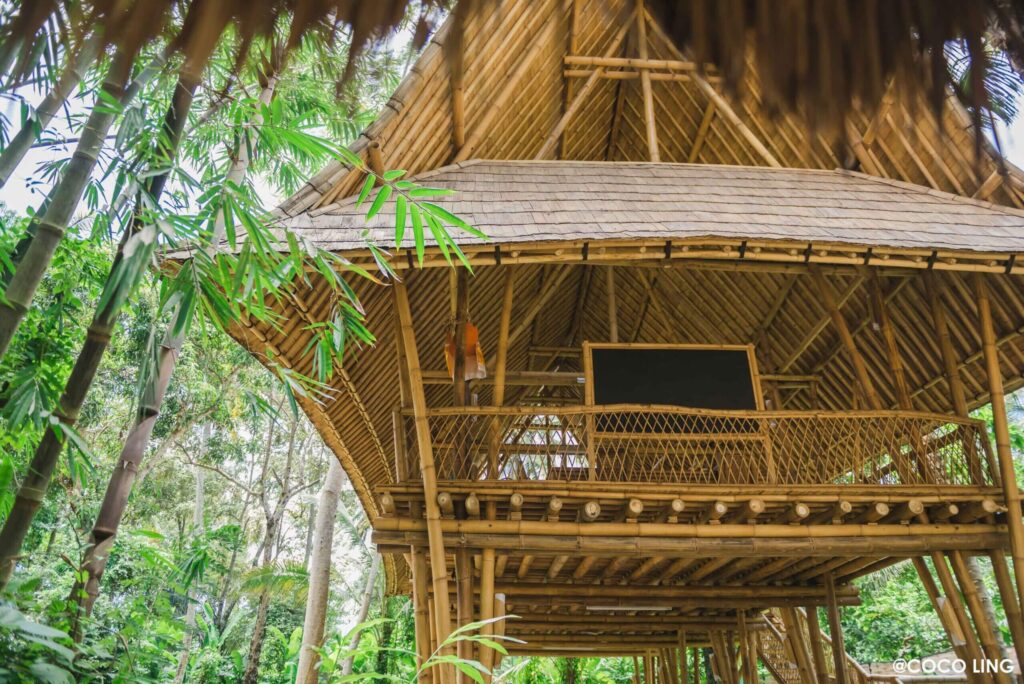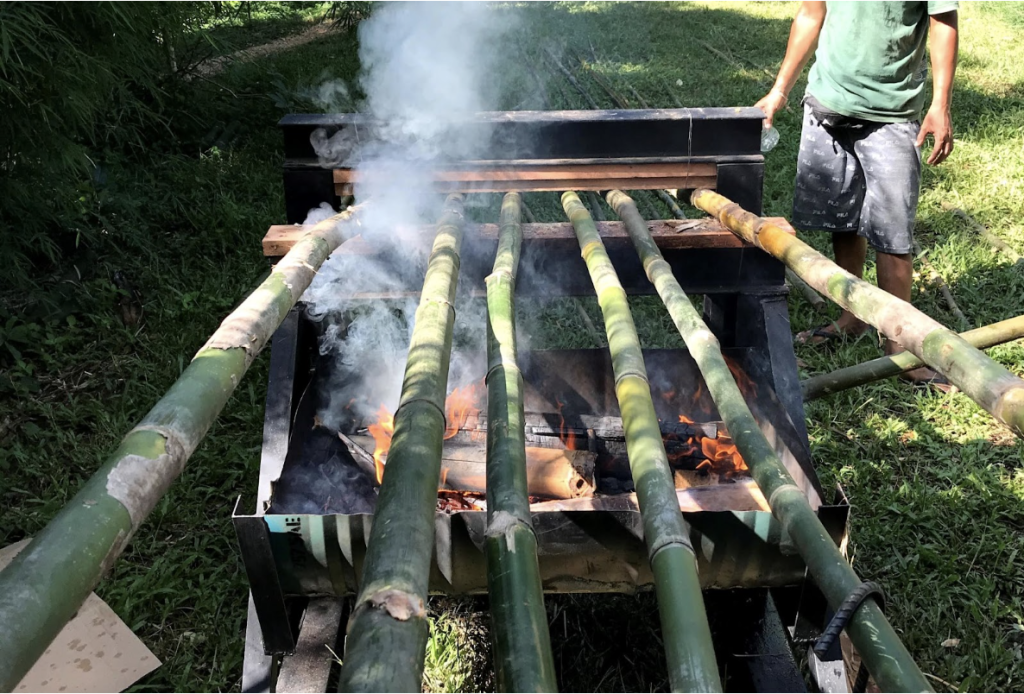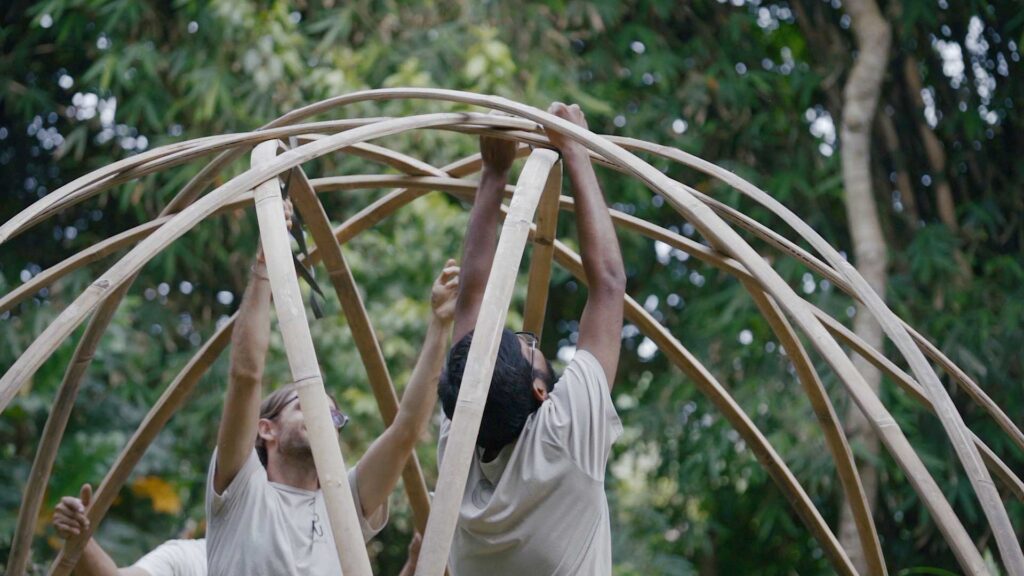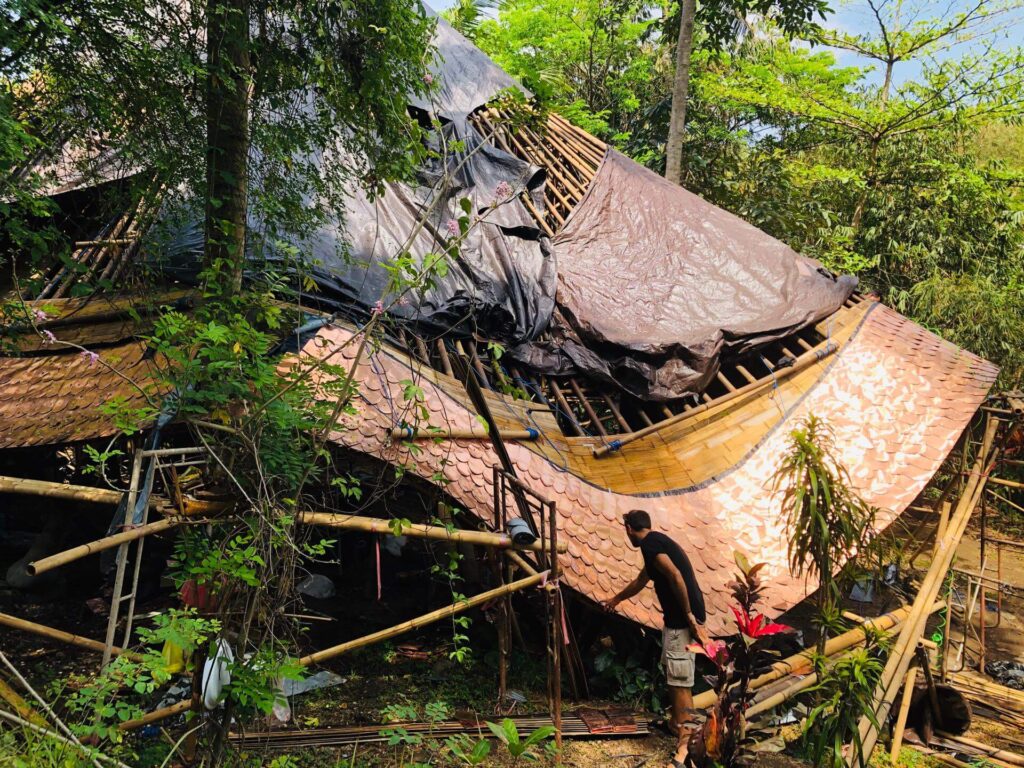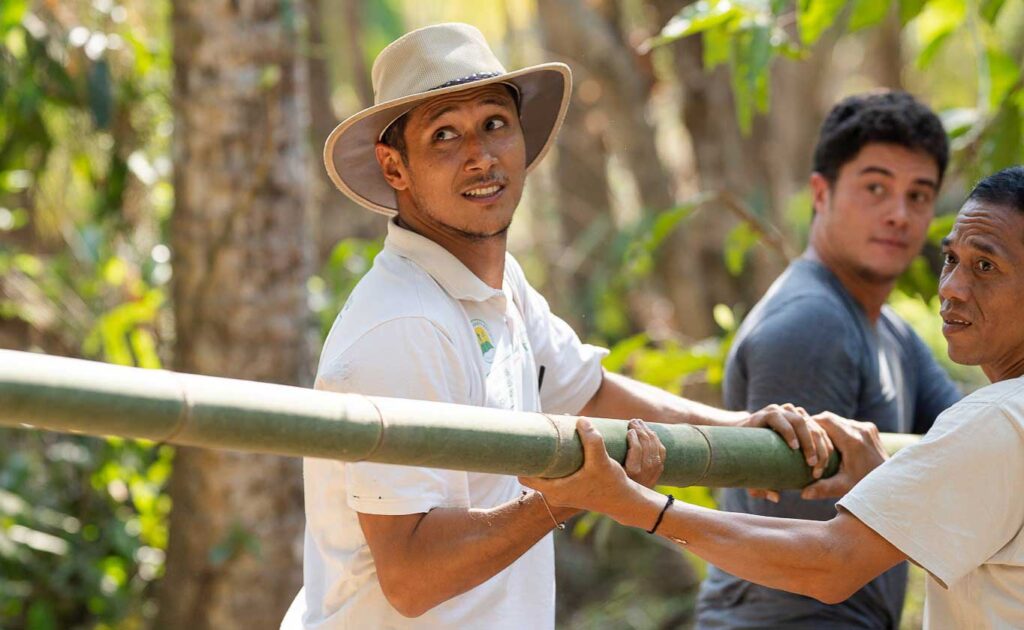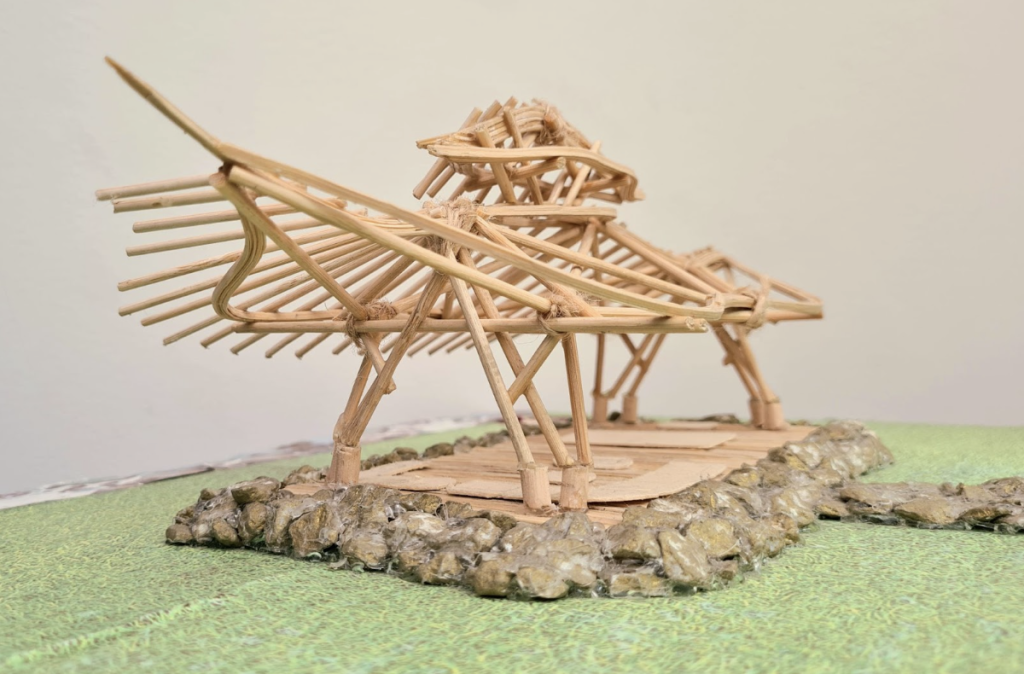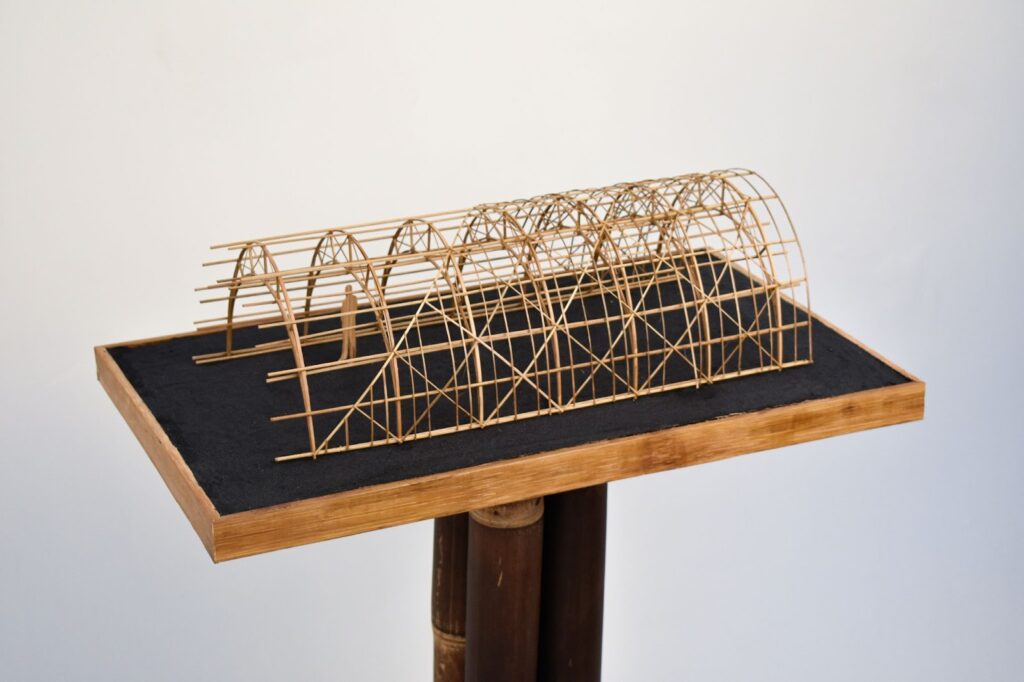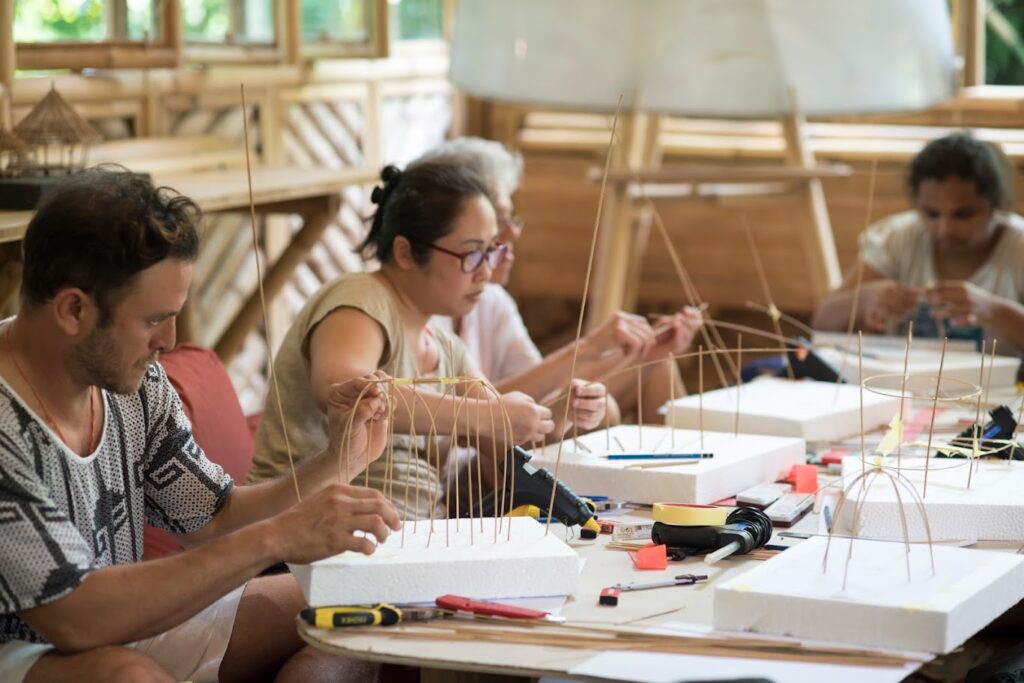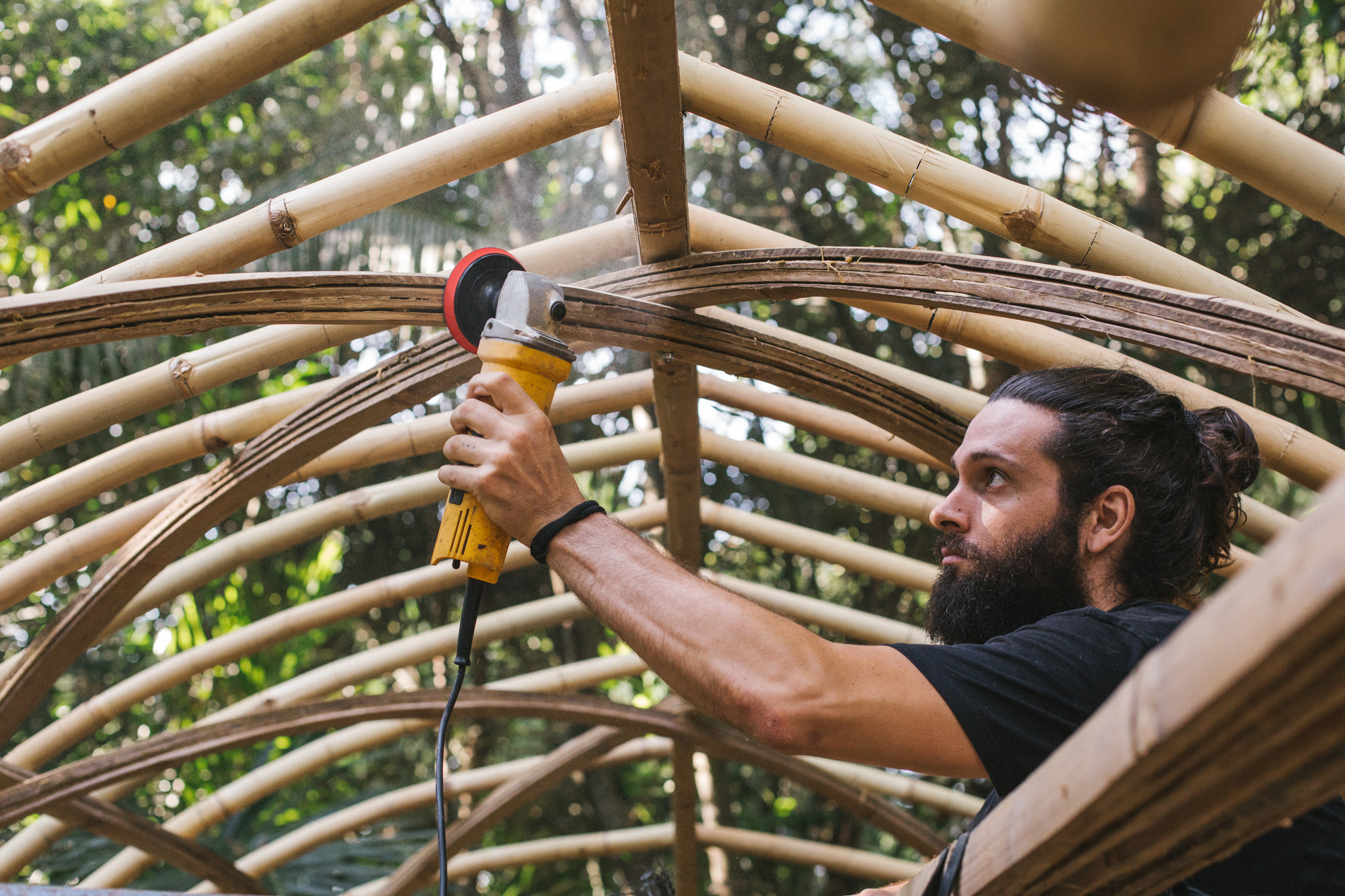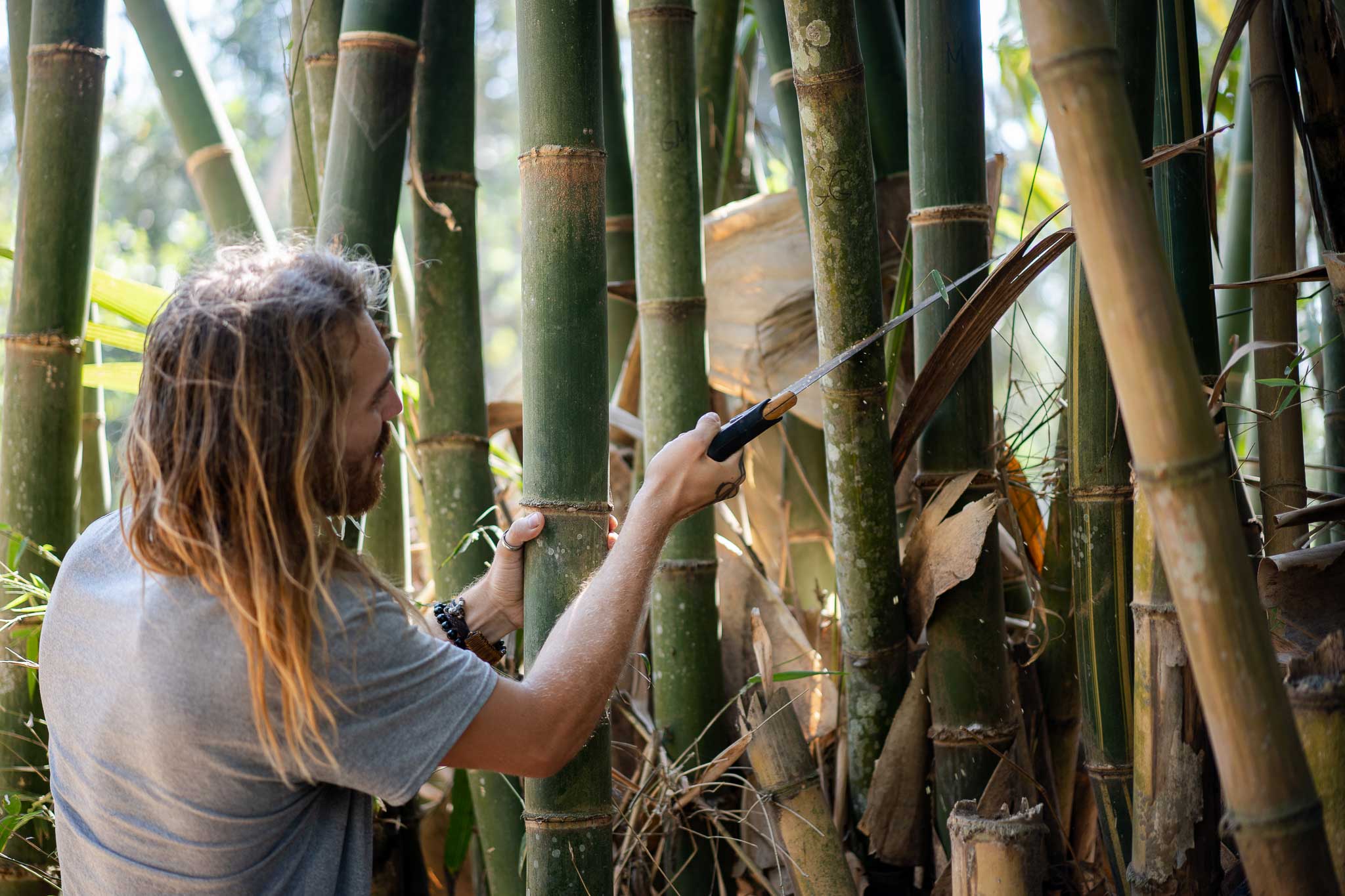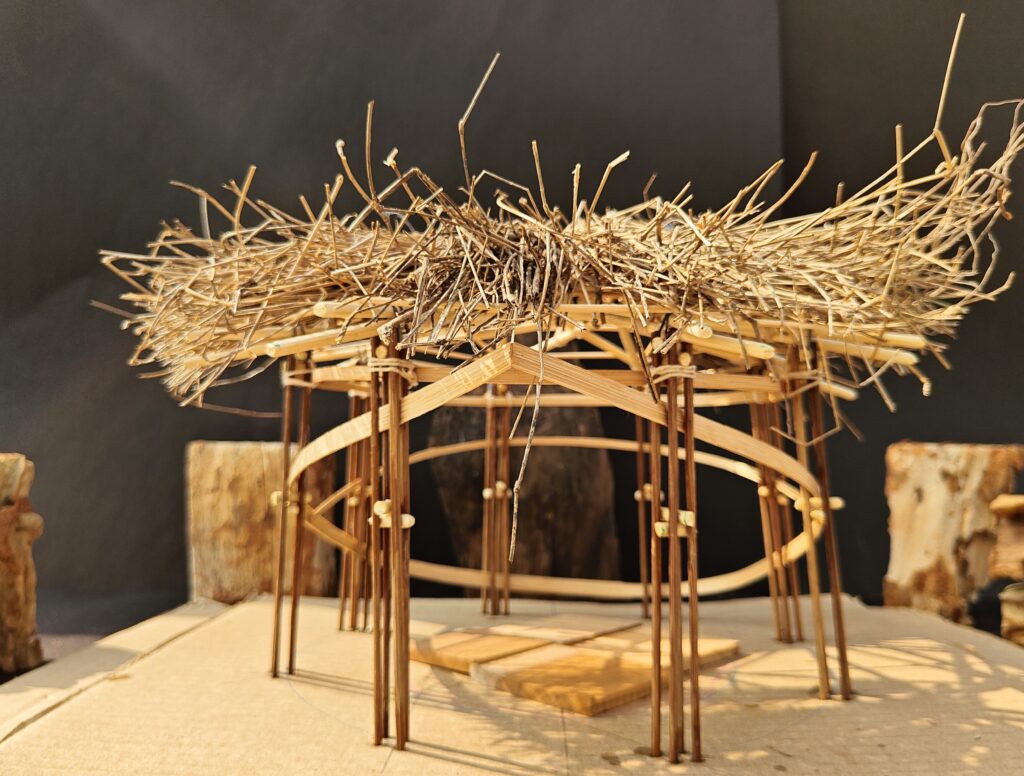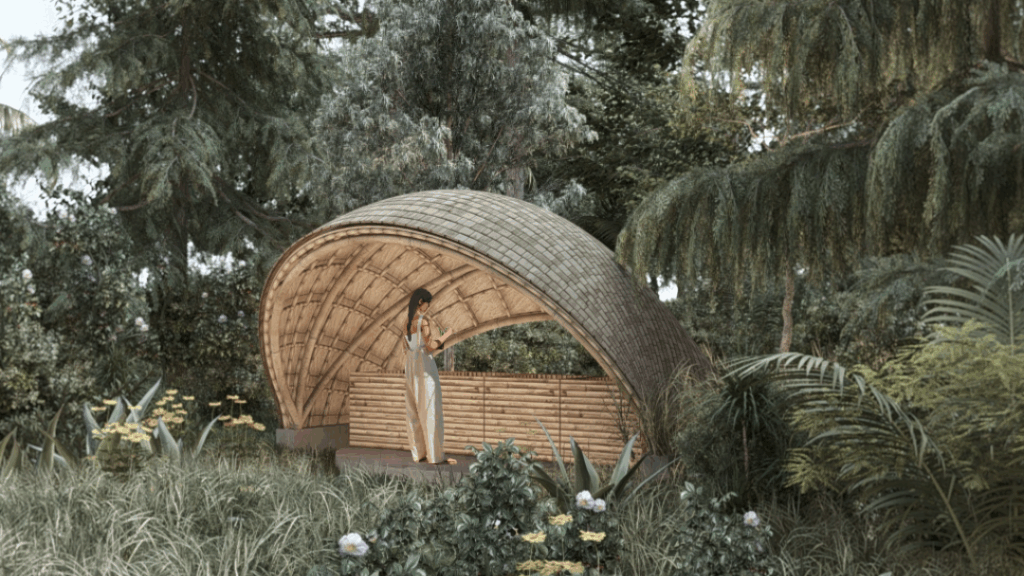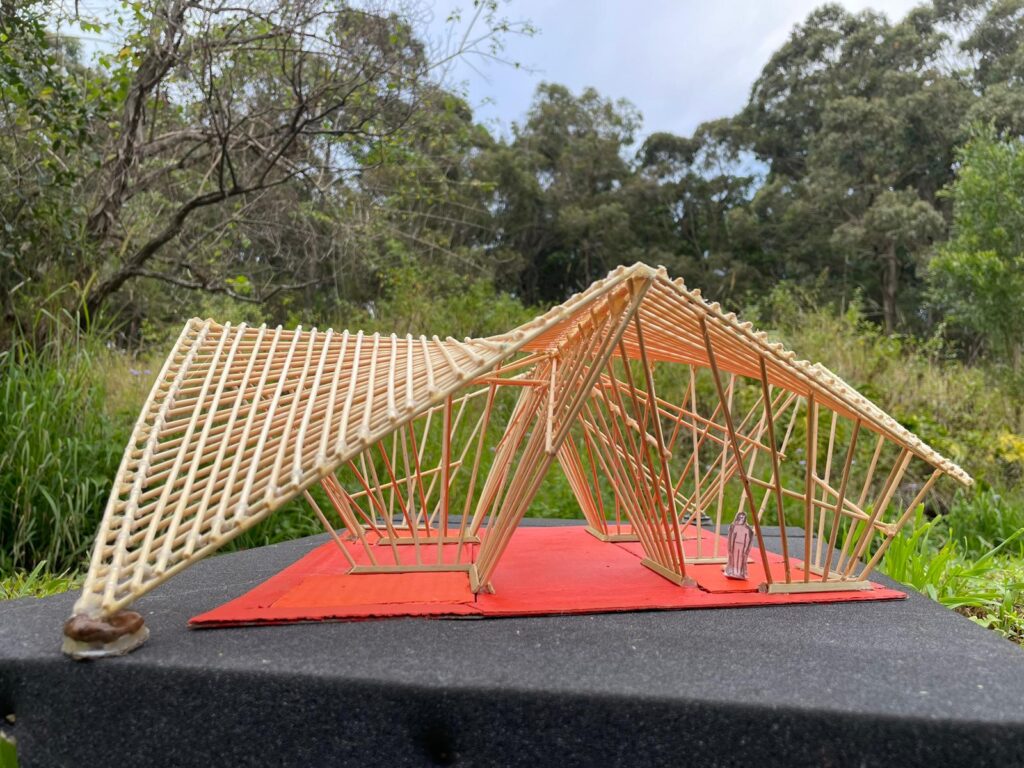Designing a Vegan Art Studio with Hyperbolic Paraboloids
By | May 18, 2025 | Student Work -
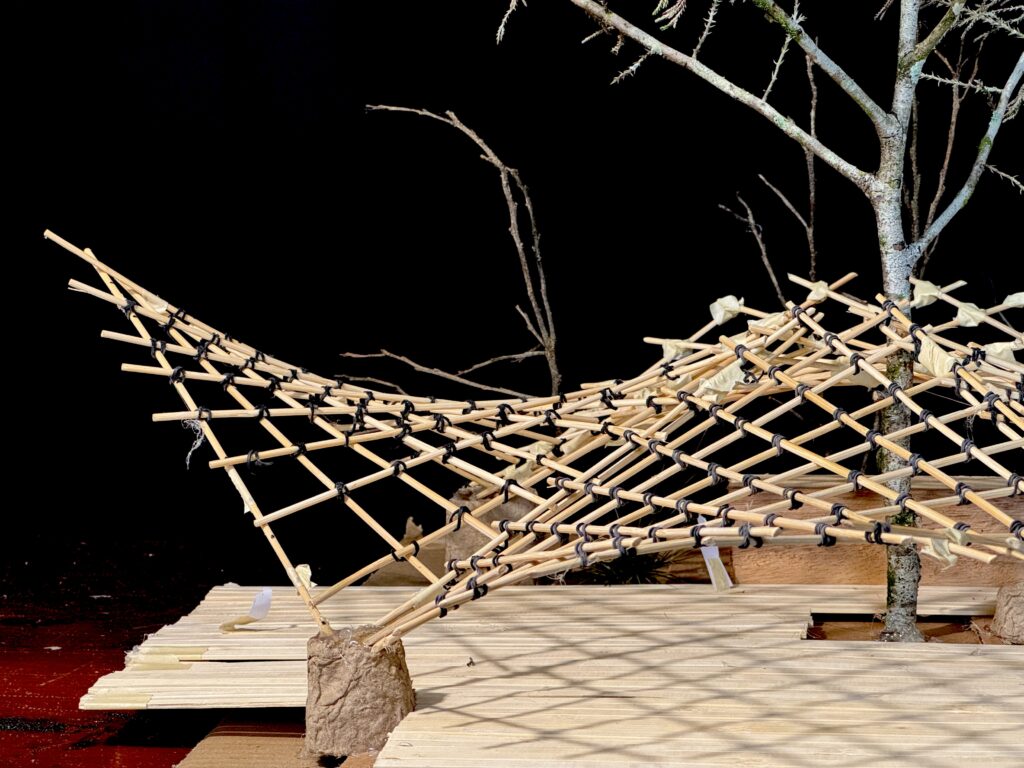
Amarillo designed a Vegan Creative Studio and Art Residency. The approach they learned in the Bamboo U Online Course shifted their approach to bamboo design.
I’m Amarillo Ngozi, a multidisciplinary artist and designer with a deep burgeoning passion for vegan architecture. Joining Bamboo U was a thrilling opportunity because bamboo has long fascinated me as a powerful, sustainable material. I was eager to learn how I could incorporate it into my own architectural practice, especially in developing vegan architecture—a concept that is central to my design philosophy. Vegan architecture, for me, is all about honoring animal rights, ecology, and human health. Therefore, bamboo’s minimal environmental footprint, carbon negativity, and remarkable versatility made it the perfect fit for these principles.
Through the Bamboo U course, I gained invaluable skills and confidence to work creatively and practically with bamboo. It wasn’t just about learning—it expanded my design horizons. I now feel empowered to push boundaries in ways I hadn’t even imagined before. The lifecycle approach of the course addressed sourcing, treating, and manipulating bamboo, and gave me the tools I needed to explore more daring yet practical, fluid and organic forms in my designs.
This course has redefined how I think about architecture, encouraging me to challenge architectural norms and embrace bamboo’s unique properties. It’s exciting to think that what began as a curiosity has now become an integral part of my design ethos.
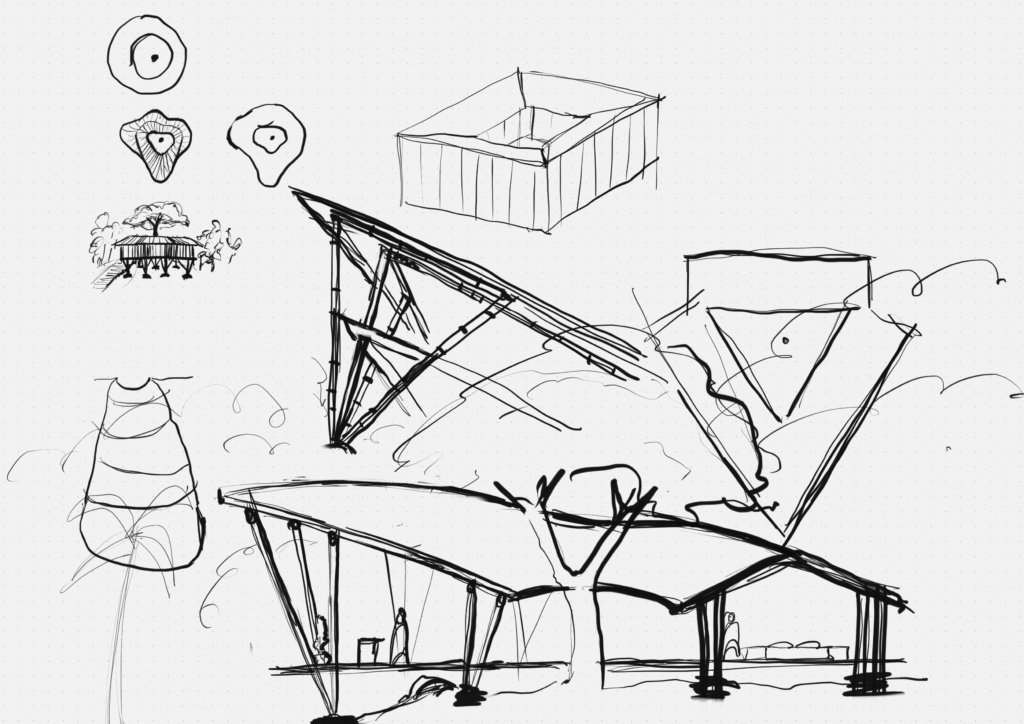
Related: Crafting a Biophilic Eucalypt Shelter
The Vegan Creative Studio and Art Residency is a dream space designed to nurture creativity in a tranquil, immersive environment. Tucked away on a hillside in the serene bush of rural St. James, Jamaica, this structure would sit above a small stream that falls into a small pond. It is designed around a large Guango tree on a rocky flat, half way up the slope. This project is envisioned as a sanctuary where the natural world and creative processes coexist in harmony. Picture dappled sunlight filtering through the bamboo canopy, the soft sounds of falling water, and the rustle of the forest in the breeze—it’s a space where inspiration flows effortlessly.
The architecture embraces fluidity, blending organic forms with traditional elements. The bamboo canopy gracefully covers the space, creating a continuous indoor-outdoor experience where nothing feels rigid or confined. The deck is the heart of the structure—an open, flexible living space that dissolves the boundaries between inside and outside, fostering a deep connection to the environment.
To build the structure, I would rely on Bambusa vulgaris, a bamboo species commonly found in Jamaica, known for its strength and availability.
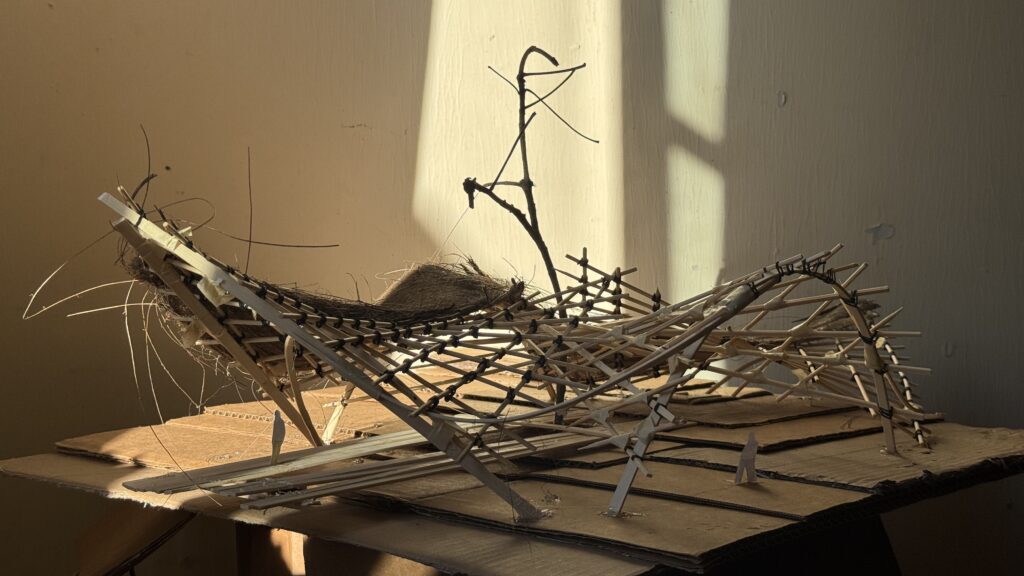
Developing this project into a final model was an exciting journey, though not without its challenges. At first, the process seemed daunting, especially when trying to model with bamboo’s unique structural properties. But through the Bamboo U course, particularly the sessions with Elora Hardy and Lucas Schlueter, I learned to embrace an iterative approach. Their emphasis on moving between physical and digital models transformed my design process. It became less about designing a building and more about exploring the interplay between bamboo’s form and the structure’s function, and a crucial part of that was developing an intuition as to how the bamboo pole wants to be used.
Starting with a physical model helped me visualize and experiment with shapes and proportions. Then, transitioning to digital modeling allowed me to work out finer details, like where the parabolic roofs connected to the foundation columns or where these roofs connected to each other.
The “hypars,” which are a structural system that creates curved forms using straight bamboo poles, required a bit of experimentation for me to get used to. However, each iteration brought new clarity. Integrating multiple roofs into one cohesive canopy was the main challenge, and it was deeply satisfying once the solution emerged. The back-and-forth between physical and digital models allowed me to develop the design while staying grounded in practicality—a process I found initially frustrating, then liberating and inspiring.
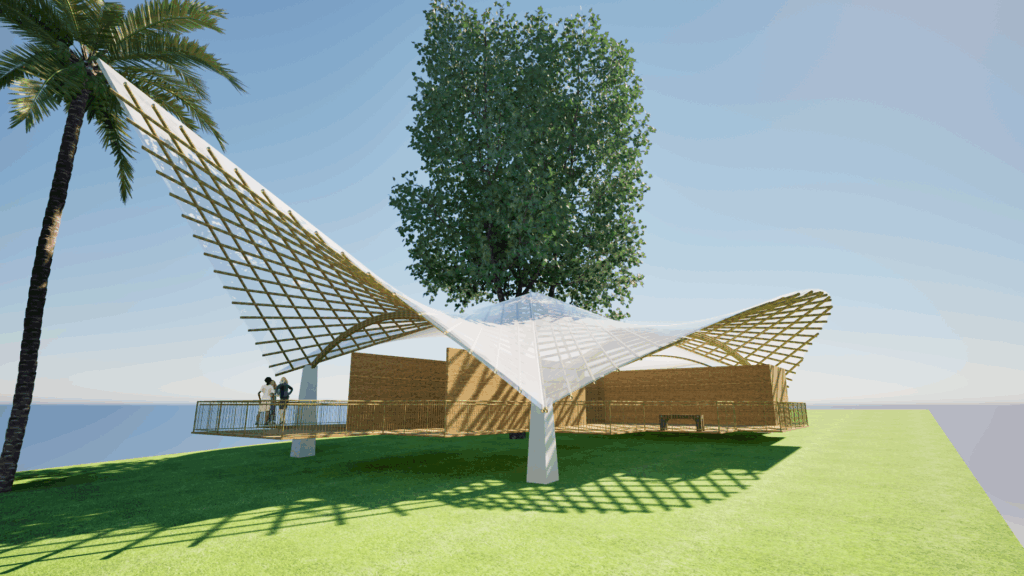
Related: A Bamboo Community Center Inspired by Cacao Pods
One of the highlights of the Bamboo U course was learning about foundation types and joinery. This practical knowledge was crucial in addressing design challenges and really helped me refine the model’s details, particularly the bamboo connections. The Designing with Bamboo module was a breakthrough for me—its hands-on approach pushed me to literally design outside the box. There was one moment of feeling defeated while I was making my final concept model that turned into a powerful breakthrough, one that reshaped not only the project but my approach to design in general.
The final model reflects all the learnings from the course. It’s an architectural statement for me, a personal monument to a more sustainable and more vegan architecture. The journey from concept to model was transformative, and I’m excited to see how this project could evolve into a full-scale build in the future.
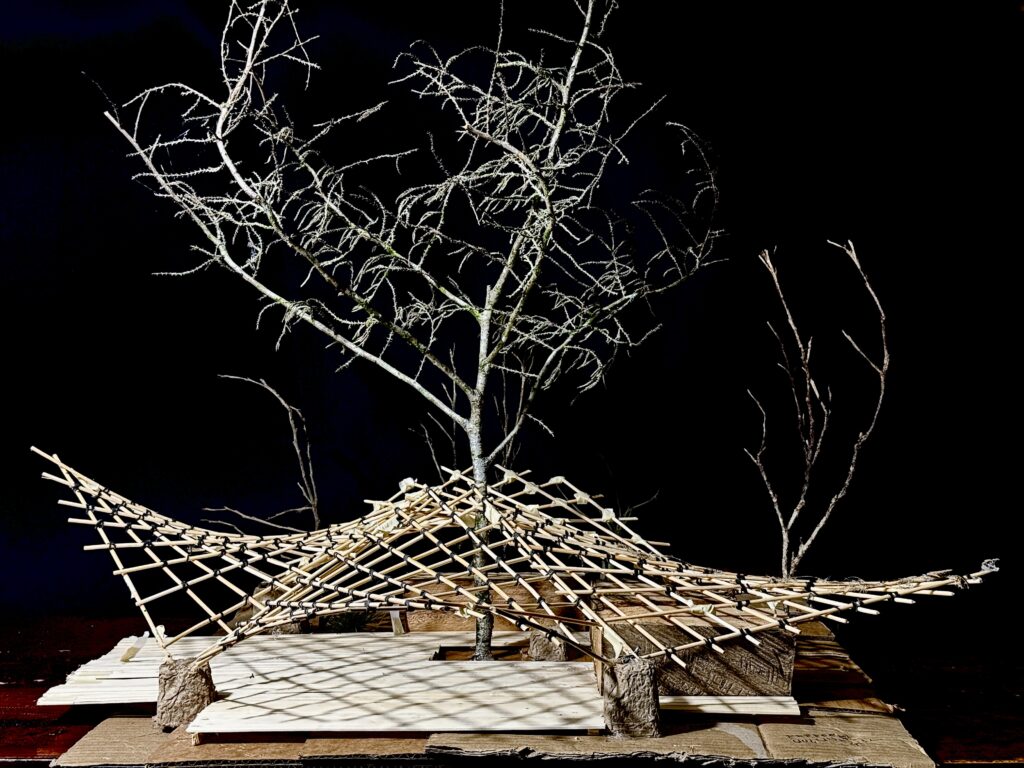
Overall, taking the Bamboo U course has been a transformative experience for me, both personally and professionally. It expanded my vision of what’s possible with sustainable materials and deepened my connection to bamboo as an eco-friendly, versatile resource. The key takeaway for me was the confidence to push the limits of my creativity and use bamboo to design structures that are not only beautiful but also aligned with my ethical values.
I’m excited about the future and look forward to incorporating bamboo into more of my projects. The possibilities feel limitless now, and I’m eager to continue exploring, learning, and growing as a designer. This journey has only just begun, and I can’t wait to see where it takes me next!
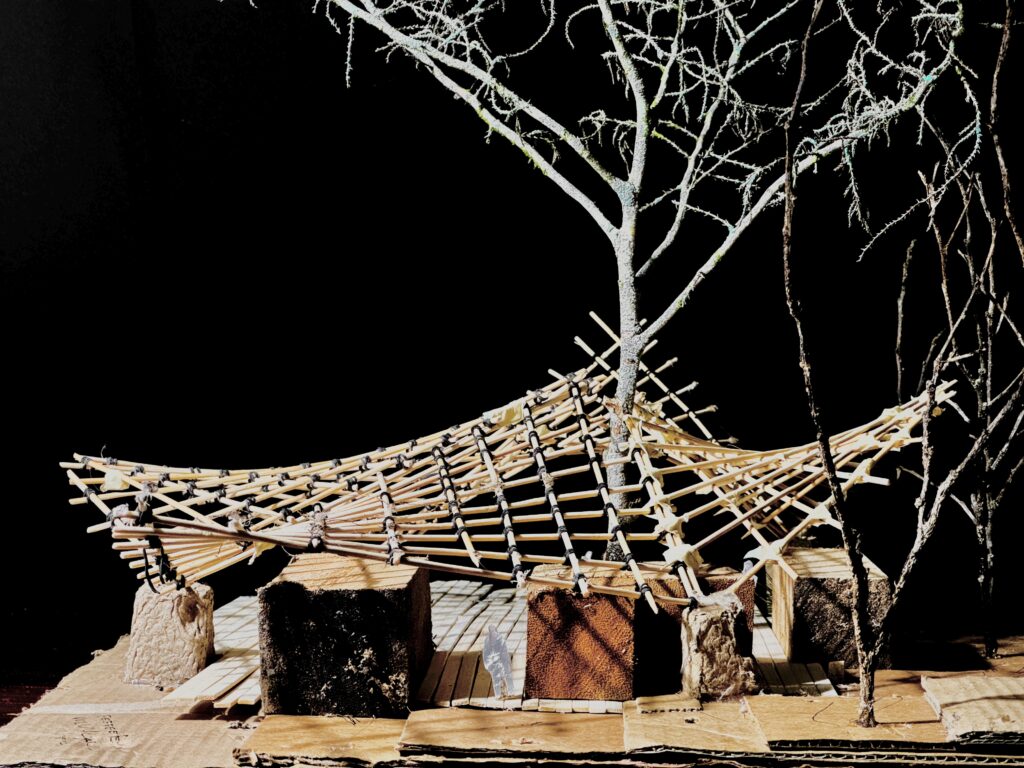
Want to design your own bamboo project? Now’s your chance! Join one of our in-person or online courses today! Click this link to learn more.


